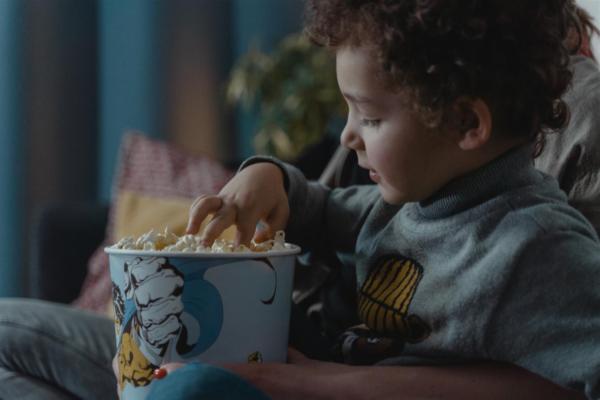As the daughter of a vicar, I remember so clearly how busy the Christmas season was for my dad, and by extension for our family. There were boxes of oranges ready for making Christingles, our lounge was often full of people planning Christmassy events and occasionally people would arrive and drop off tins of chocolates (perhaps the highlight!). Today I have the privilege of leading a church and although it looks different to Christmas in my dad’s church, it means that Christmas is not only the most wonderful time of the year as the song suggests, but also the busiest.
Whatever church tradition you’re part of, Christmas is likely to be a time of celebration. It may include more services, rehearsals for special events, parties, opportunities for serving the community, content to create for online events, carol singing – maybe all of the above and more! It’s a time full of joy, celebration and expectation as we remember that Jesus left the glory of heaven and came to earth.
But there are lots of things that happen in church during this season that can be complicated to navigate for families caring for vulnerable children. We want to highlight three examples of areas that can be challenging and offer some questions that might help you consider what part you could play in supporting the families in your church in this season.
December calendar
During this season, almost every sense of ‘normal’ routine goes out the window to make way for Christmas plans. For many care-experienced children, structure equals safety. The impact that trauma can have means that unfamiliarity and surprise are associated with danger and therefore children respond accordingly. This response is often communicated through behaviour.
If you do life with families who have adopted or are fostering, you’ll recognise that there are some things they have put in place to help establish a sense of routine and create a familiar rhythm. This helps to increase their child(ren)’s sense of felt safety; when a child isn’t simply told that they are safe, but they also feel it. Felt safety comes from adults managing the environment and acting in such a way that allows a child to know that adult has the capacity to keep them safe. For children who’ve experienced trauma, this can take years to cultivate.
Parents and carers can do this by using things like visual timetables, ensuring plans are clear and remain the same each week, reiterating schedules often and consistently demonstrating their ability to meet the child(ren)’s needs – both those needs that they can articulate and those that aren’t!
Then Christmas comes along. The impact of disrupted schedules and the fear it can create can affect families beyond ‘just’ the disappointment or confusion on a Sunday – it can seep into the whole season.
As you plan your church’s December calendar, consider:
- Is there a way of keeping some familiarity for children in the midst of the changes? A familiar schedule for your Sunday service, familiar people present, or a clear visual timetable?
- Can you find out what matters the most to the children in your group? It could be knowing when they get food, what order activities are happening, which adults will be there or what noises there might be. Ensure that you communicate clearly to help address their specific concerns. The best way to do this is in and through relationship with their grown-ups who know them best and will have strategies and experience to share!
It’s ALL so exciting
Another impact that trauma has on the developing brain is that it can negatively affect a child’s ability to regulate their emotions. We often think about this in relation to managing anger or frustration, and whilst it includes that, trauma can also have a huge impact on a child’s ability to manage positive emotions. Great excitement and joy can feel equally overwhelming.
The Christmas season can feel like going from one party to another, from one Santa’s grotto to yet more twinkly lights and exciting events. For children who have had a tricky start in life, this can be hard to handle, which therefore puts more pressure on the families who love and are raising them.
For these families, it can be easier and more appropriate to limit the time spent at these events or avoid them altogether. But making those decisions can come with a cost; to the children who want to be connected and for the families who want them to be part of celebrations.
As you think about the events and activities taking place in your church this season, consider:
- Are there spaces in your church for children experiencing sensory/emotional overload? Is there a space you could create that is connected to the celebration, with fun activities to do, but with less stimulation?
- Can you think creatively with the parents and carers in your church about how to adapt plans so that children can engage and be connected in a variety of different ways?
- Can you think about how to build light and shade into any celebration times, giving all the children time to be excited and also time to wind down?
The iconic kids' nativity
I’ve cried at many a church nativity over the years; usually from the emotions of seeing by beautiful children looking so cute in their costumes, although one Nativity induced tears of laughter as Gabriel and Joseph argued, loudly and physically, about who was going to hold baby Jesus! It’s a special part of many Christmas calendars, and it takes a huge amount of work to make it happen.
Rehearsals and run-throughs involve lots of waiting, and for care-experienced children this can be hard. Not being able to articulate that you’re unsure how to occupy yourself or that you’re unsure what’s happening next or what you’re meant to do, in an already differently structured time and space, means children are more likely to do things that are unintentionally unhelpful or perceived as disruptive.
In addition, perhaps the grown-ups are under added pressure because of the desire to put on a good show, and therefore may not respond as patiently as normal. Or there may be other adults (parent or carer helpers for example) in the room who aren’t normally there, who the children don’t know as well and who may not know how best to respond appropriately (even if it’s with kind intentions) to the needs of individual children.
For some care-experienced children, the performance itself is a scary prospect. Beyond the nerves that many children face, the feeling that everyone is looking at you can feel intimidating and puts pressure on self-esteem that is already often relatively low.
Some will respond to these feelings of anxiety in fight mode, perhaps exhibiting outbursts of anger or frustration – but it’s crucial to remember that what they’re trying to show is that they’re struggling. Some may respond in flight mode and may seem unwilling to take part in anything – what they’re trying to communicate is their anxiety. Others may respond in freeze mode, either on stage or in the build-up, perhaps appearing to daydream – what they’re communicating is that it’s too overwhelming.
As you put thought and planning into your Nativity this year, consider:
- How could you equip your team to respond to behaviour as communication in order to support rather than penalise children who are struggling?
- For those who might not want to be ‘on stage’ but still want to be involved, are there alternative ways you can engage them in the performance or the preparation?
- For those who want to be involved, are there familiar things or people you can ensure are there to help in the waiting, setting them up to win in the trickier times?
Thank you for taking the time and care to consider these questions as you plan for the Christmas season. Together we really can make a transformational difference.
----------------------------------------------
As you prepare for Christmas, we invite you to consider donating to Home for Good to help us find a home for every child who needs one. Learn more about our Christmas appeal here.









